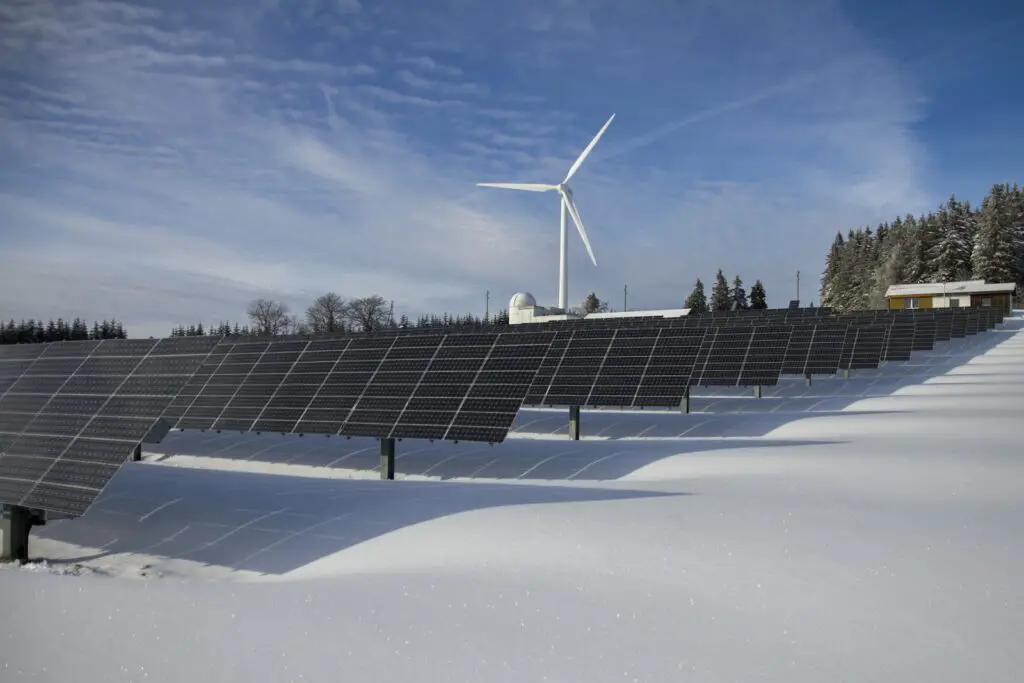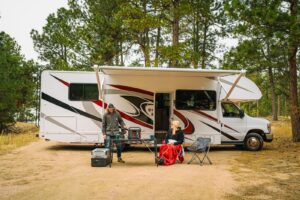Combining a split charger with a solar panel is becoming increasingly popular among eco-conscious consumers as we strive for energy efficiency and harnessing renewable power sources.
In this blog post, we will explore how these two technologies can work to provide an optimal charging solution for your batteries, ultimately enhancing both performance and sustainability.
What are Split Chargers and Solar Panels, and How Do They Work Together?
Split chargers and solar panels are vital to a modern electrical system, particularly in vehicles like campervans or motorhomes.
While split chargers enable multiple batteries to be charged independently, solar panels convert sunlight into usable electricity.
These devices can provide reliable power for various amenities when used together without depleting the primary battery needed to start the engine.
We will discuss in detail what split chargers and solar panels are, how they work, and how they can work together to optimize power management in your vehicle or off-grid setup.
What is a Split Charger and How Does it Work?
A split charger is an essential component of a vehicle’s electrical system, designed to charge multiple batteries independently while ensuring the primary battery remains charged.
This device allows vehicles like campervans and motorhomes to use secondary leisure batteries to power amenities such as lights, water pumps, or refrigerators without depleting the main starter battery required to start the engine.
The function of a split charger depends on its type.
The most common types include manual switches, voltage sensing relays (VSRs), and smart alternators.
Manual switches require user intervention to control when each battery receives power and are generally considered outdated due to their reliance on human action.
Voltage sensing relays automatically connect or disconnect based on voltage levels to maintain an optimal charging balance between both batteries.
For instance, consider a camper van owner driving during daylight hours with solar panels mounted on their vehicle roof.
A VSR-type split charger connected in parallel with the solar controller output would ensure proper current flow management through this setup.
As long as energy input exceeds consumption rates – from the alternator while the engine is running or sunlight shining directly over photovoltaic cells.
Adequate amperage will reach every part involved (starter plus auxiliary).
What are Solar Panels, and How Do They Work?
Solar panels are innovative devices that harness the power of sunlight and convert it into usable electricity through the photovoltaic (PV) effect.
Comprised of numerous solar cells, these panels absorb photons from sunlight, releasing electrons to generate direct current (DC) electricity.
A key component of any solar panel system is the solar charge controller, also known as a solar regulator.
Its primary function is to regulate the voltage and current from your solar panels and ensure proper charging of your batteries without overcharging them.
Solar panels have become increasingly popular due to their ability to provide clean, renewable energy while reducing dependence on traditional fossil fuels.
Depending on the user’s specific needs, they are commonly used in on-grid, off-grid, or hybrid setups, such as powering an RV when traveling or living off the grid in remote locations where conventional electric supply may not be accessible.
Can You Use a Split Charger with a Solar Panel?
Yes, you can use a split charger with a solar panel system to charge the starter, engine, and leisure batteries.
Combining these two systems allows maximum power output and ensures your batteries are always charged, even when off-grid.
How Can I Combine Split Chargers and Solar Panels to Maximize Power Output?
Combining split chargers and solar panels for maximum power output is an effective way to charge multiple batteries in a vehicle or RV efficiently.
Using a split charger, you can distribute the energy harvested from solar panels between the starter and leisure batteries while ensuring each maintains its optimal charge level.
For example, imagine driving your RV during daytime hours when sunlight is plentiful.
Solar panels on your vehicle generate clean energy that feeds directly into the charging system.
A well-designed setup would utilize a split charger with a solar controller to ensure house batteries, battery bank, and engine starter batteries are charged proportionally based on their needs.
What Advantages Can I Expect from Using a Split Charger in Conjunction with a Solar Panel?
Using a split charger with a solar panel has several benefits.
Here are some of the advantages you can enjoy:
- Maximum Power Output: Combining a split charger with a solar panel increases the charging capacity of your battery bank, giving you more power to run your appliances and devices.
- Efficient Use of Energy: A split charger ensures that all batteries in the system receive equal amounts of charge, preventing overcharging or undercharging and prolonging your batteries’ lifespan.
- No Need for Manual Switching: With a split charge system, there’s no need to switch to charge different batteries separately manually.
The system automatically switches between them depending on their voltage levels.
- Easy Installation: Split chargers are easy to install, and most come with straightforward instructions that even DIY enthusiasts can follow.
- Cost-Effective: Using a split charger with a solar panel saves money on energy bills by reducing reliance on mains power or generator use.
- Environmentally-Friendly: Solar panels produce clean energy without emitting harmful pollutants or greenhouse gases, making them an eco-friendly alternative to fossil-fuel-powered generators.
- Increases Mobility: Having a reliable power source from multiple batteries charged by solar panels makes it easier to travel off-grid or in remote locations without worrying about running out of power.
Overall, using a split charger with a solar panel is an efficient and cost-effective way to keep your batteries charged while enjoying the benefits of renewable energy sources like solar power.
How Do I Choose the Best Split Charger and Solar Panel System for My Needs?
Choosing the right split charger and solar panel system ensures reliable power in your vehicle or off-grid setup.
With so many options available, deciding which system is right for your needs can be overwhelming.
Factors such as battery type, charging requirements, compatibility issues, system complexity, budget, and warranty and customer support should all be considered.
It’s important to ensure compatibility between your split charger and solar panel system and to match your solar modules to MPPT charge controllers for maximum power output.
We will explain these factors to help you choose the best-split charger and solar panel system for your needs.
What Factors Should I Consider When Selecting a Split Charger and Solar Panel System?
When selecting a split charger and solar panel system, various factors must be considered to ensure optimal performance.
Here are some key factors:
- Battery Types: The type of battery you have will determine the type of charger that is required.
Before selecting the right charging system, you need to know whether you have a lead-acid, AGM, or lithium-ion battery.
- Charging Requirements: The amount of power required to charge your batteries depends on the size and number of batteries used.
Choosing a split charger and solar panel system that can meet your specific battery charging needs is important.
- Compatibility Issues: Ensure that your split charger and solar panel system are compatible with each other and your vehicle’s electrical system.
Consult an expert if you need more clarification about compatibility issues.
- System Complexity: Consider the complexity of the setup when choosing a split charger and solar panel system.
A simple setup may only require a basic manual 12-volt splitter, while more complex systems may require automatic splitters or smart alternators.
- Budget: Determine how much you’re willing to spend on the split charger and solar panel system before purchasing.
- Warranty and Customer Support: Choose a brand with good warranty coverage and customer support services in case something goes wrong.
By considering these key factors, you’ll better understand what type of split charger and solar panel system will work best for your needs while also ensuring optimal performance from your solar setup itself.
What Compatibility Issues Should I Be Aware of When Combining Split Chargers and Solar Panels?
It’s important to note that not all split chargers and solar panels are compatible.
When choosing a split charger and solar panel system, check for compatibility issues before purchasing.
Additionally, matching your solar modules to MPPT charge controllers is recommended instead of mixing them with different controllers.
This ensures maximum power output from your solar panels while protecting against overcharging or undercharging your battery bank.
How Do I Install a Split Charger with a Solar Panel System?
Are you looking for a way to maximize the efficiency of your off-grid power system?
Installing a split charger with a solar panel system can help you do that.
However, the process can be complex, requiring careful attention to wiring, solar panel connections, and battery bank setup.
We’ll walk you through each step, from wiring the split charger to connecting the solar panels and setting up the battery bank.
You can enjoy optimal performance from your off-grid power system with proper installation and maintenance.
1. Wiring the Split Charger
To properly wire a split charger with a solar panel, follow these steps:
- Connect the negative wire from the solar panel to the negative terminal on the leisure battery.
- Then, manually connect only the positive wire from the solar panel to a separate fuse box or distribution block.
- From there, start the engine again, and run a new positive wire to the “input” terminal of the split charger relay.
- Connect another positive wire from the “output” terminal on the house battery side of the relay to the positive terminal on the leisure battery.
- The charging source (in this case, the solar panels) will activate the relay and direct power towards the leisure battery once it has reached a certain voltage.
- Make sure all connections are fused properly and secured tightly.
Remember that wiring a split charger can be complex, and taking proper precautions, such as wearing protective gear and consulting with professionals if necessary, is important.
With careful installation and maintenance, combining a split charger with a solar panel can lead to optimal performance of your off-grid power system.
2. Connecting the Solar Panels
When connecting solar panels to a split charger, remember a few key things. Here are some tips and steps to follow:
- Determine the voltage of your solar panel(s).
Ensure the voltage matches or is compatible with your split charger system.
- Connect your solar panels in series or parallel, depending on the maximum output voltage and current flow you need.
- Use appropriate cables and connectors to connect your solar panels to your split charge system.
Ensure they are rated for the higher voltage and the same amperage as your system.
- If you have multiple batteries, you can use a combiner box to connect them to one solar panel.
This will allow you to charge all of your batteries at once.
- Install a charge controller between your solar panel and battery bank if you’re using a high-wattage solar panel (6 watts or more).
A charge controller automatically regulates the charging voltage and prevents solar controllers from overcharging.
- Be sure to fuse all connections properly for safety reasons.
- Test your solar system regularly by checking battery voltages and monitoring how long it takes for them to charge up fully from sunlight.
3. Setting Up the Battery Bank
When setting up a battery bank for a split charger and solar panel system, several important factors must be considered.
Here are the key steps to follow:
- Choose the Right Batteries: For most RV use cases, two types of batteries are needed – a starter battery and a leisure battery.
Make sure you select the appropriate type of battery for each application.
- Select the Right Charge Controllers: When using a split charger with a solar panel system, it’s important to choose charge controllers that can handle multiple batteries.
This will enable you to connect your starter and leisure batteries to two separate controllers on the same solar panels.
- Determine the Correct Battery Voltage: It’s essential to ensure that both your vehicle starter battery and leisure batteries have the same voltage levels.
Therefore, if one battery is at 12 volts, ensure the other is at 12 volts.
- Connect Your Solar Panels: Once you’ve selected your solar panels, connect them in parallel or series, depending on your needs.
Be sure to consider any shading or obstructions that may impact their performance.
- Properly Wire Your System: Wiring is crucial when connecting all components of your solar splitter charger and solar panel system, including charging sources like shore power or an engine alternator.
By following these steps and selecting the right types of batteries, split charge, controllers, voltages, wiring, and equipment sizes for your setup, you can ensure optimal performance from your split charger and solar panel system while maintaining maximum efficiency on off-grid adventures!
What are Some Tips for Maintaining and Caring for Split Chargers and Solar Panels?
Proper maintenance and care of your split charger and solar panels are crucial for optimal performance and longevity.
Regularly cleaning the solar panels, monitoring battery charge and voltage, and inspecting wiring for wear and tear can prevent potential issues.
1. Cleaning and Maintaining the Solar Panels
Regular cleaning and maintenance of solar panels are important to ensure maximum efficiency and output.
Here are some tips for cleaning and maintaining your solar panels:
- Schedule regular cleaning: Depending on the location of your solar panels, they may require more or less frequent cleaning.
In general, cleaning them every 6-12 months is recommended.
- Avoid harsh chemicals: When cleaning the solar panels, avoid using harsh chemicals as they can damage the surface of the panels.
Instead, use a soft brush or cloth with water and mild soap.
- Remove debris: Before cleaning the solar panels, remove any debris, such as leaves or dirt, that may have accumulated on top of them.
- Rinse thoroughly: After washing the solar panels with soap and water, rinse them thoroughly with a hose or pressure washer to remove any remaining soap residue.
- Check for damages: Inspect the surface of the solar panels for any damages or cracks that might affect their performance.
If you notice any issues, contact a professional to repair them.
- Hire a professional service: For larger installations, it may be worth considering hiring a professional cleaning service to ensure they are properly cleaned and maintained.
- Monitor performance: Keep track of your solar panel’s performance over time, including their energy production levels and efficiency rates.
This can help identify potential issues early on so they can be addressed before they become bigger problems.
Regular maintenance of your solar panels can prolong their lifespan and ensure optimal performance over time.
2. Monitoring the Battery Charge and Voltage
To ensure optimal performance of a split charger and solar panel system, monitoring the battery charge and voltage is vital.
This prevents overcharging or undercharging of your batteries, which can lead to damage or reduced lifespan.
A battery voltage chart is an essential tool for monitoring batteries charged by solar panels, providing accurate readings on battery levels that enable you to make informed decisions about power usage.
Additionally, remember that charging methods like CCCV (constant current constant voltage) are used primarily on lead-acid batteries but might not be compatible with other types of two batteries.
Taking care of your solar batteries by following manufacturer instructions, such as avoiding overexposure to heat or cold weather conditions, is equally important in maintaining their overall condition and efficiency.
3. Inspecting the Wiring for Wear and Tear
Inspecting the wiring for wear and tear is essential to maintaining and caring for split chargers and solar panels.
Here are some steps to follow:
- Check for any signs of fraying or corrosion on the wiring.
- Make sure that all connections are clean, tight, and free from any damage.
- Check the insulation around the wires to ensure it is not cracked or damaged.
- Avoid over-tightening any nuts or bolts on the connectors, as this can cause damage to the wiring.
- Consider using cable ties to hold wires in place and prevent them from getting tangled or damaged.
- Ensure that a qualified electrician carries out all electrical work to minimize the risk of accidents.
Remember that regular inspections can help identify potential problems early on, preventing costly repairs.
Additionally, proper maintenance and care can extend the lifespan of your split charger and solar panel system, ensuring optimal performance when you need it most.
What are the Potential Risks and Limitations of Using a Split Charger with a Solar Panel, and How Can They be Mitigated?
While using a split charger with a solar panel has many benefits, there are also risks and limitations, such as overcharging and compatibility issues.
Read on to learn more about safely and effectively using this system.
1. Overcharging and Voltage Spikes
Knowing the risks associated with using a split charger with a solar panel is important.
Overcharging and voltage spikes can damage or even completely the failure of your system.
This occurs when too much voltage rises and too much energy is pumped into the battery faster than it can react, causing local overcharge conditions and polarization.
Maintaining an appropriate charging voltage to avoid these issues and ensure PV safety is crucial.
One way of achieving this is by utilizing solar charge controllers, which help regulate how much power enters the battery to prevent overcharging and voltage drops or spikes.
Troubleshooting Tips
Here are some troubleshooting tips to help you avoid issues when using a split charger with a solar panel system:
- Monitor the battery voltage regularly.
Check the voltage of your batteries regularly to ensure they are not being overcharged, which can damage your battery and reduce its lifespan.
- Inspect the wiring for wear and tear.
Examine the wires that connect your split charger and solar panel system to ensure they are in good condition.
- Avoid overcharging and voltage spikes.
Overcharging and voltage spikes can lead to costly damage to your batteries or even result in a fire hazard in extreme cases.
- Check compatibility between components.
Ensure all components are compatible; using incompatible parts can disrupt the power flow and cause problems.
- Follow proper installation guidelines closely.
Ensure to properly wire all components according to instructions, including correctly connecting the split charger, solar panels, aux battery, and battery bank.
Compatibility Issues
One of the main concerns when using a split charger with a solar panel is compatibility issues.
You need to ensure that the split charger and solar panel are compatible for optimal performance.
A poorly matched system can lead to overcharging or voltage spikes, damaging your battery bank or even causing a fire.
It’s important to note that warranties for generators or solar inverters can be voided by failing to consider important factors such as compatibility and installation.
So, before purchasing any equipment, it’s crucial to thoroughly research and consult an expert who can help you determine which products will work best for your specific needs.
In conclusion, using a split charger with a solar panel can be an efficient way to keep your battery bank fully charged and ready to go.
By understanding the benefits of using both technologies together, choosing the right system for your needs, properly installing and maintaining it, and being aware of potential risks and limitations, you can enjoy optimal performance from your split battery charger and solar panel setup.
With the ability to charge multiple batteries at once and even power off-grid systems like water pumps or compressor fridges, this combination is perfect for those who want to live on their terms without worrying about running out of water pump power.
References:
- 12 Volt Planet | Split Charging – https://www.12voltplanet.co.uk/split-charging.html
- Shop Solar Kits | How to Charge Multiple Batteries with One Solar Panel – https://shopsolarkits.com/blogs/learning-center/how-to-charge-multiple-batteries-with-one-solar-panel








